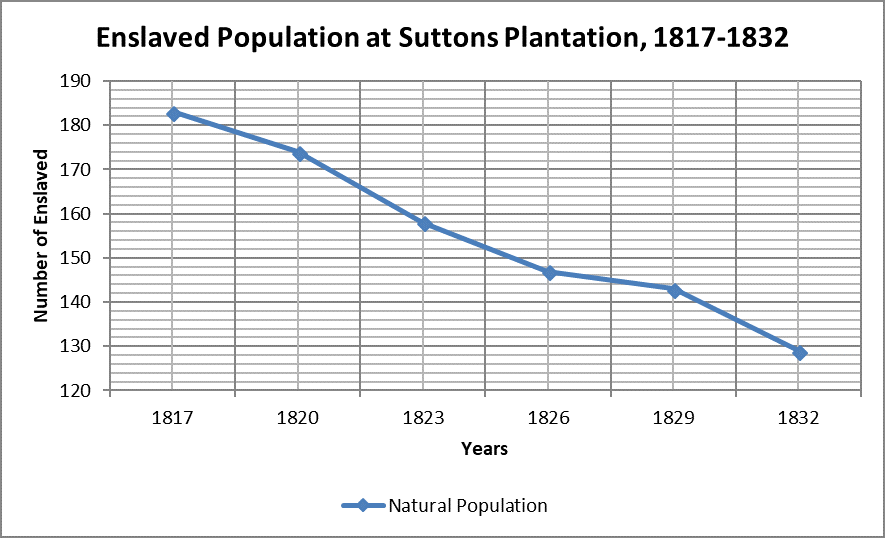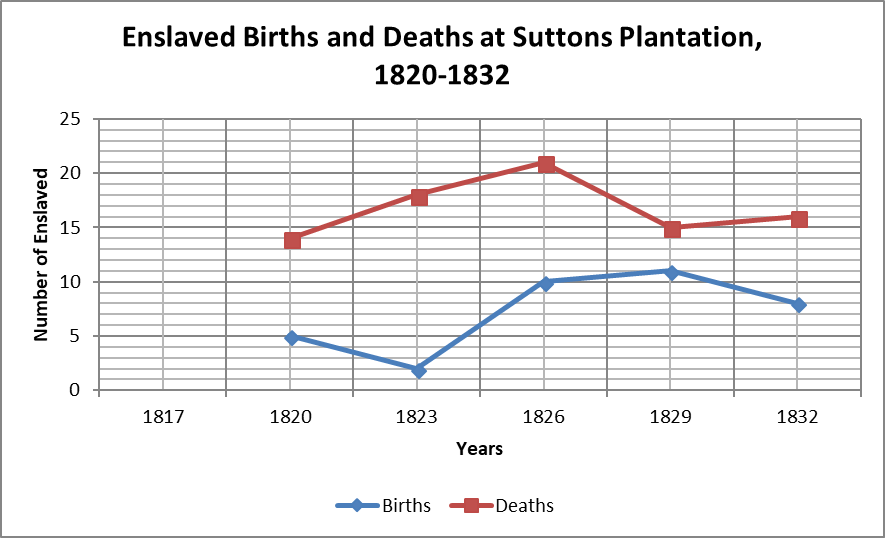Suttons Sugar Plantation
Overview
Located in central Clarendon, Suttons sugar plantation was strategically positioned on the western bank of the River Minho where its water was harnessed to power the estate’s sugar works. Originally the property of the Sutton family, the plantation came under the control of the Dawkins’ in the early 1720s, and by 1800 it had grown to approximately 1,400 acres and harboured a captive labour force of 191 Africans. Sutton’s remained in the Dawkins’ possession until the early 1900s when it was sold off in order to raise money for extinguishing the mounting debts arrcued by the family back in England.
Historians have noted that the very first uprising of enslaved people in Jamaica which caused serious concern amongst the island’s slave-owners occurred at Sutton’s plantation in 1690. The insurrection that broke out, which involved an estimated 400 enslaved Africans led by the father of Cudjo the Maroon, was eventually put down and the captured rebels either imprisoned or executed. Approximately 40 insurgents escaped into the hills of Clarendon where they established protective strongholds with other runaways in order to maintain their newfound liberty.
Map and Photos
Original nineteenth-century map of Suttons. The white circle in the centre indicates the location of the aqueduct, water wheel and boiling house.
Suttons Aqueduct.
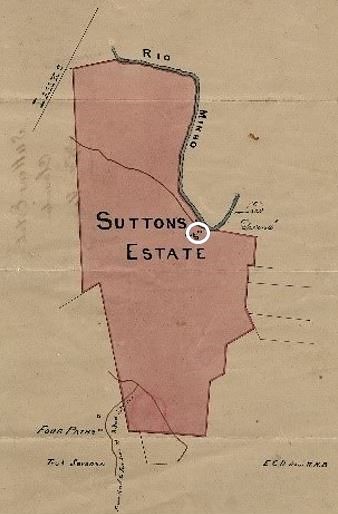
Exterior wall of the sugar boiling house.
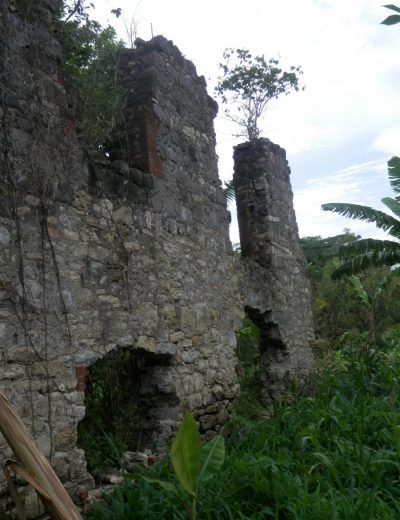
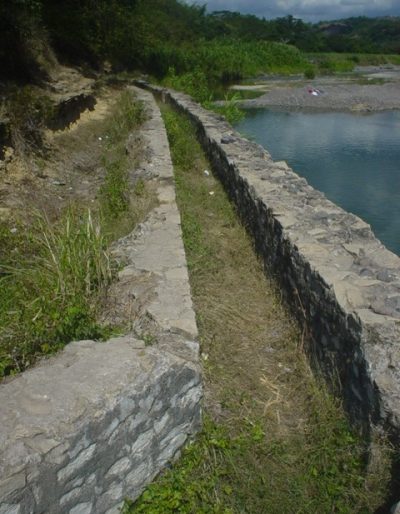
Water wheel house.
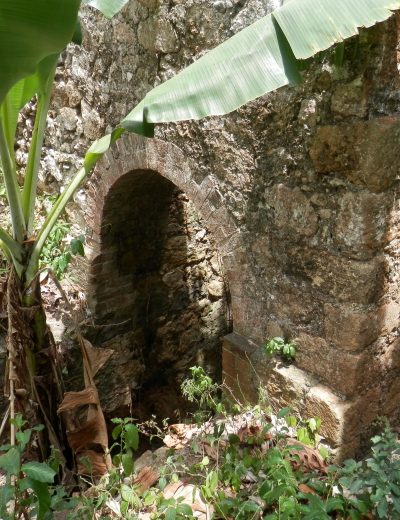
The Enslaved African Labour Force
African people were critical to the operation of Caribbean estates and it was their cumulative labour power combined with direction from master craftsmen, artisans, sugar boilers and cultivators, who possessed specialist knowledge and experience, which contributed to the construction, functionality and maintenance of sugar plantations and pens.
In order to run an orderly estate which produced the largest quantity or highest grade of tropical foodstuffs, its owner(s) created hierarchical divisions of labour and strategically allocated the roles within these amongst the enslaved depending upon their age, sex, health and place of birth (Africa or the Caribbean). Four divisions of labour existed upon Suttons: instructional and supervisory, skilled, manual, and domestic. The photo below provides a glimpse at the yearly register kept for this estate upon the orders of the Dawkins family. Its labour structure included, but was not limited to, 5 drivers, 69 field men and women, 15 skilled artisans (8 carpenters, 4 bricklayers and 3 coopers), 13 domestics and 2 nurses. The remaining 87 Africans were young, old and sickly, who fell into a number of other classifications.
A register of enslaved Africans on Suttons, December, 1800.
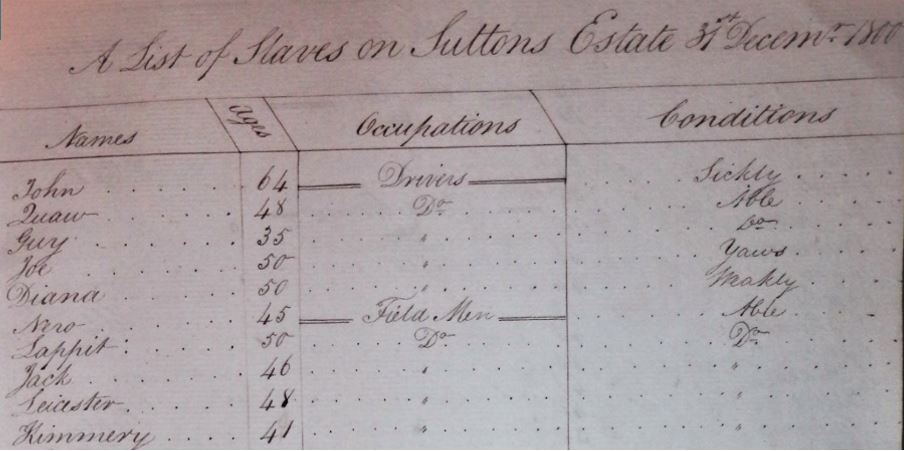
A transcription of the register on the left hand side.
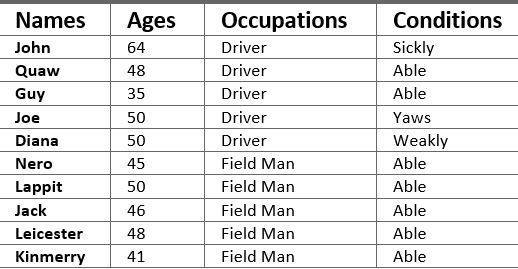
Graph 1 shows that the enslaved population at Suttons decreased significantly during the final years of British West Indian slavery (1817-1833) . While graph 2 shows that deaths consistently exceeded births, resulting in a drop from 183 to 129 people (a 30% decrease) during this period.
A combination of factors contributed to this decline including the estate’s ageing population, malnourishment, which resulted in sickness and disease, and, most notably, the intense and brutal labour regime associated with sugar cultivation that diminished the enslaved’s fertility and exhausted them to the point of death. Conditions upon the Dawkins’ estates were particularly devastating due to the high levels of sugar production that were maintained by the family in an effort to generate a profitable financial return that would support their elite lifestyle in England.
